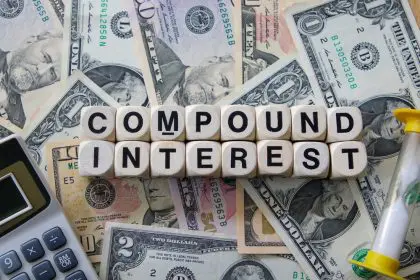That $3 monthly maintenance fee looks harmless – barely the cost of coffee. But this tiny charge conceals a financial time bomb capable of exploding into thousands in losses, damaged credit and missed wealth-building opportunities. Understanding how small bank fees compound into major problems empowers you to protect your financial future.
The mathematics of financial death by a thousand cuts
Banks generate billions from fees that customers barely notice. A $3 monthly charge becomes $36 annually and $360 per decade. But the real damage extends far beyond simple multiplication.
Consider this cascade effect:
- Your $3 fee drops your balance below zero
- The overdraft triggers a $35 penalty
- Automatic payments bounce, adding more fees
- Late payments damage your credit score
- Higher interest rates cost thousands on future loans
That innocent $3 fee just became a financial avalanche. Multiply this scenario across various fees – ATM charges, paper statements, foreign transactions – and you’re hemorrhaging money without realizing it.
Overdraft fees turn molehills into mountains
The most devastating fee spiral starts with overdrafts. Banks typically charge $30-35 per overdraft, and they don’t stop at one.
Here’s a common scenario that ruins budgets:
You have $5 in checking. A forgotten $3 monthly fee processes, leaving $2. Later that day, you buy lunch for $10, assuming you have more money. That single transaction triggers a $35 overdraft fee. If you make three more purchases before realizing the problem, you’re facing $140 in penalties from one $3 fee.
Banks often process transactions from largest to smallest, maximizing overdraft occurrences. This practice, while legal, transforms minor miscalculations into major financial crises.
Credit scores suffer permanent damage
Small fees create ripple effects reaching your credit report. When overdrafts prevent automatic bill payments, the consequences multiply:
- 30-day late payments drop scores by 60-110 points
- Multiple late payments compound the damage
- Lower scores mean higher interest rates
- A damaged score costs thousands on mortgages
A single missed payment caused by a $3 fee could add $50,000 to your mortgage over 30 years through higher interest rates. That coffee-priced fee just became a luxury car.
Lost wealth-building opportunities multiply
Every dollar paid in fees represents lost investment potential. Consider investing that $3 monthly fee instead:
10 years: $360 becomes $500 with modest returns 20 years: $720 becomes $1,500 30 years: $1,080 becomes $3,500
These calculations assume conservative 5% annual returns. Higher-yield investments could triple these amounts. Meanwhile, the bank uses your fee money to generate profits for shareholders, not you.
Common fees draining your accounts
Banks deploy numerous fee strategies that seem minor individually but devastate collectively:
ATM fees – Out-of-network withdrawals cost $3-6 per transaction. Using non-bank ATMs twice weekly costs over $500 annually.
Maintenance fees – Monthly charges of $10-15 unless you maintain minimum balances trap lower-income customers in fee cycles.
Paper statement fees – Choosing paper over digital costs $2-5 monthly for information you’re entitled to receive.
Foreign transaction fees – International purchases add 3% surcharges that accumulate quickly during travel.
Wire transfer fees – Sending money costs $15-30 per transaction at traditional banks.
Breaking free from the fee trap
Escaping bank fees requires proactive strategies and sometimes switching institutions entirely.
Choose no-fee banking – Online banks and credit unions often eliminate maintenance fees, reimburse ATM charges and offer better interest rates. The inconvenience of switching pales compared to lifetime fee savings.
Leverage technology – Set balance alerts at $100 to prevent overdrafts. Schedule automatic transfers to maintain minimums. Use apps tracking all accounts simultaneously.
Review statements religiously – Examine every charge monthly. Banks make mistakes, and fees sometimes appear without justification. Question everything unfamiliar.
Negotiate immediately – Banks often waive first-time fees when asked. Call within 24 hours of any charge. Polite persistence frequently succeeds.
Build protective buffers – Maintain a $200 minimum cushion in checking. This small buffer prevents most fee scenarios while providing peace of mind.
The psychology of ignoring small fees
Banks count on psychological blindness to small charges. The human brain dismisses $3 fees as insignificant, focusing on larger financial concerns. This cognitive bias costs consumers billions annually.
Breaking this pattern requires:
- Treating every fee as theft from your future
- Calculating long-term costs immediately
- Viewing fees as investments in bank profits, not services
- Recognizing patterns before they become habits
From financial victim to empowered consumer
Small bank fees represent a choice between enriching financial institutions or building personal wealth. Every $3 saved and invested moves you closer to financial independence rather than further into corporate profit margins.
The path forward requires vigilance, strategic banking relationships and zero tolerance for unnecessary fees. Modern banking offers numerous no-fee options – accepting fees now represents choosing financial harm.
Start today by reviewing last month’s statement. Circle every fee, calculate the annual cost, then take action. Switch banks, negotiate removals or change habits causing charges. Your future self will thank you when those saved fees become wealth rather than corporate bonuses.
Financial freedom begins with respecting every dollar. That $3 fee isn’t trivial – it’s the first domino in a chain reaction affecting your entire financial future. Stop the cascade now, before coffee money becomes a catastrophe.













